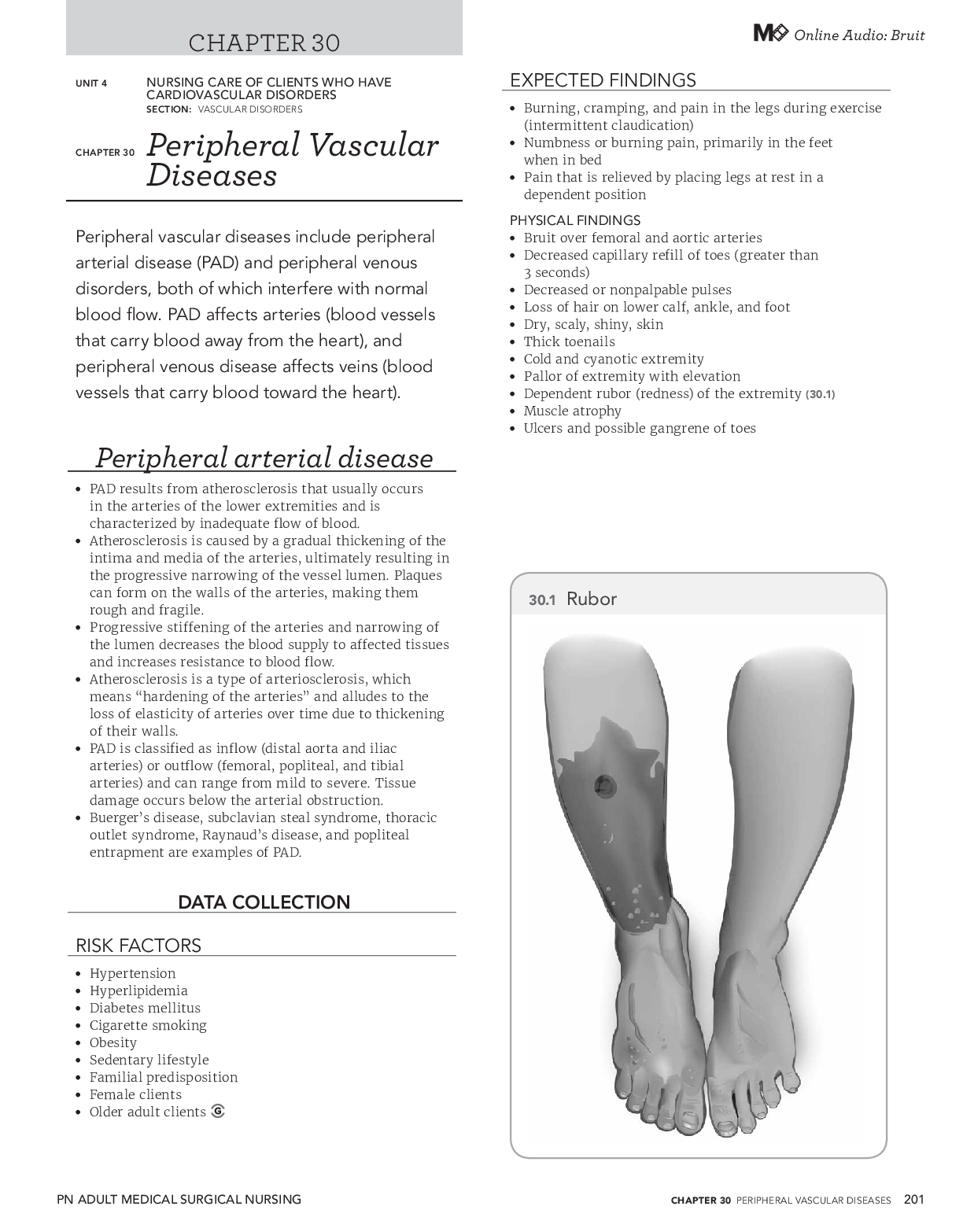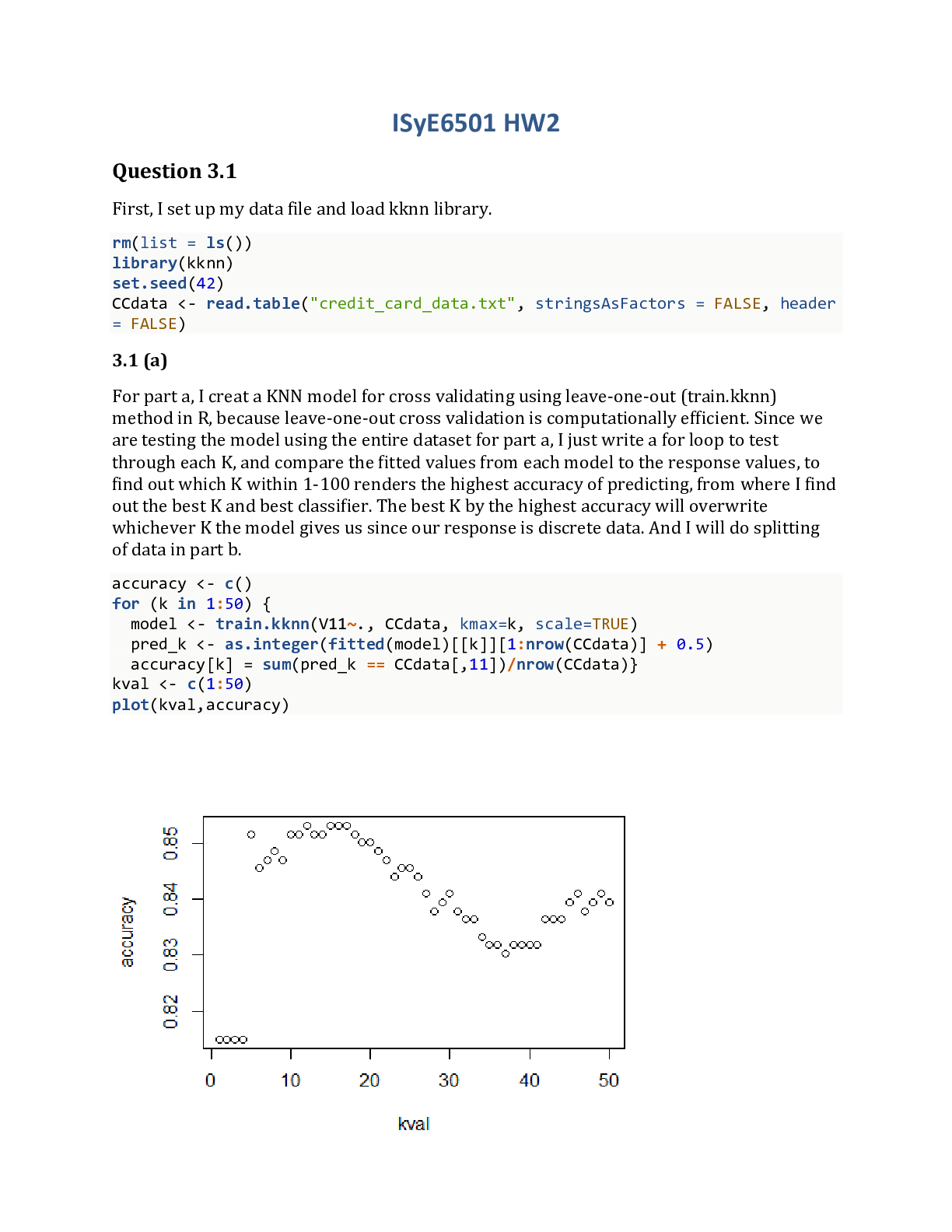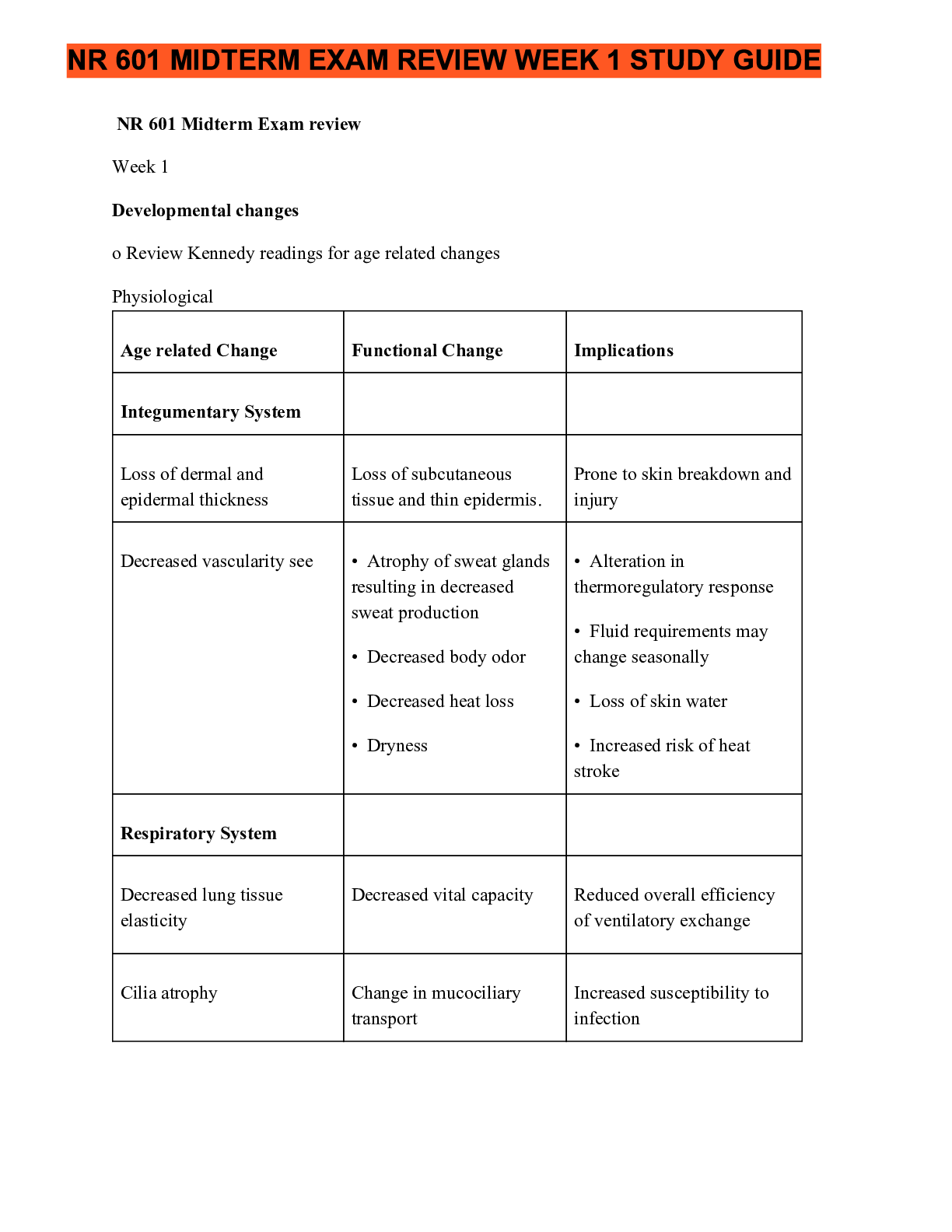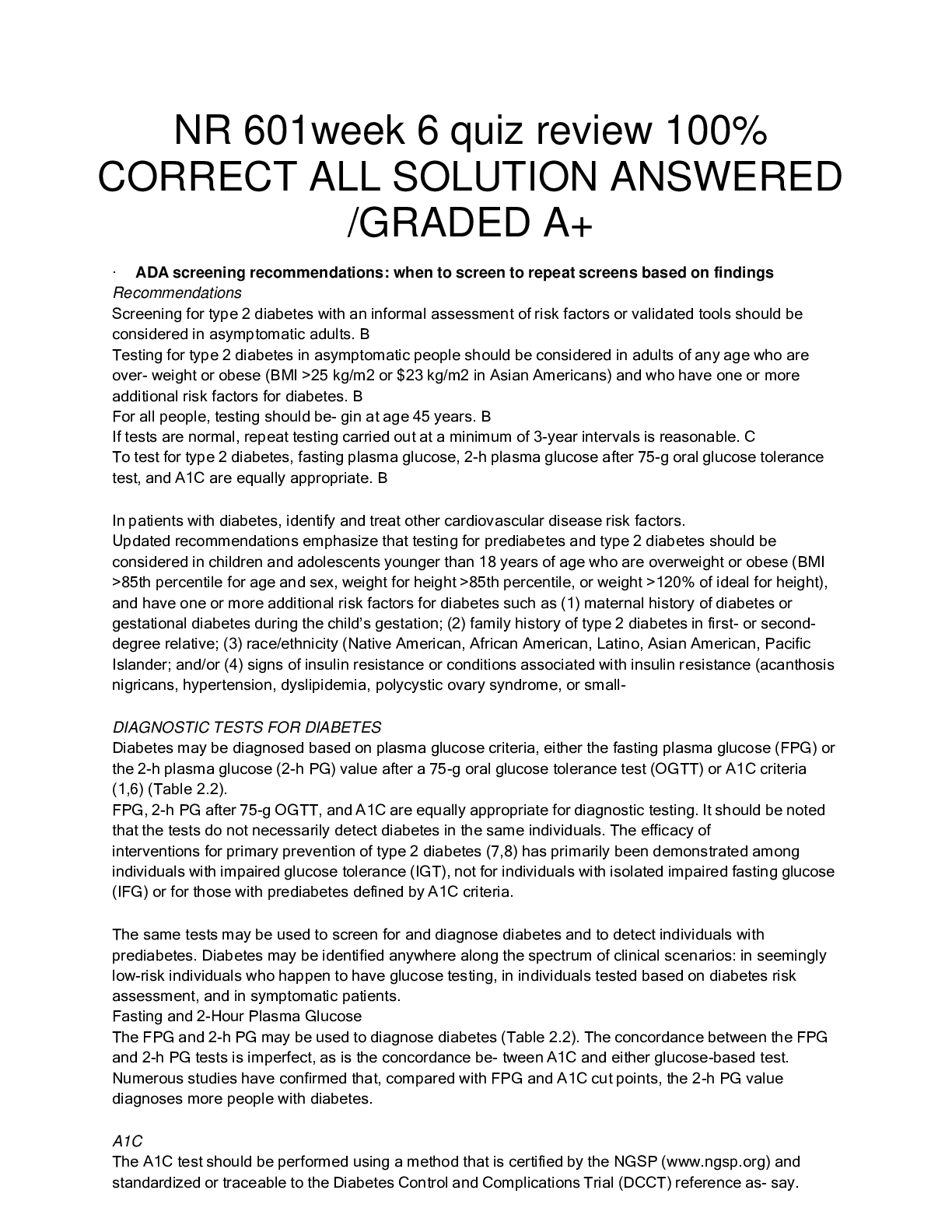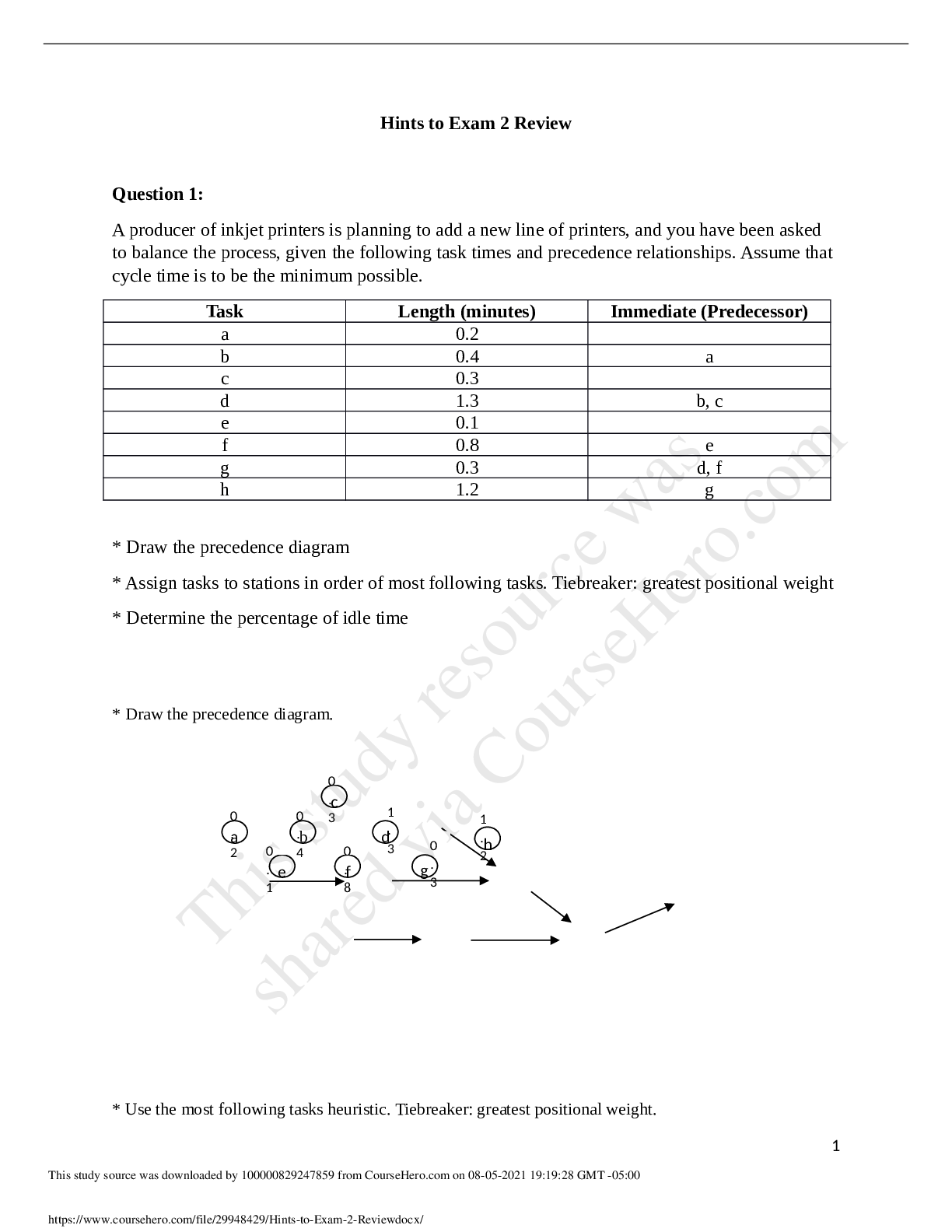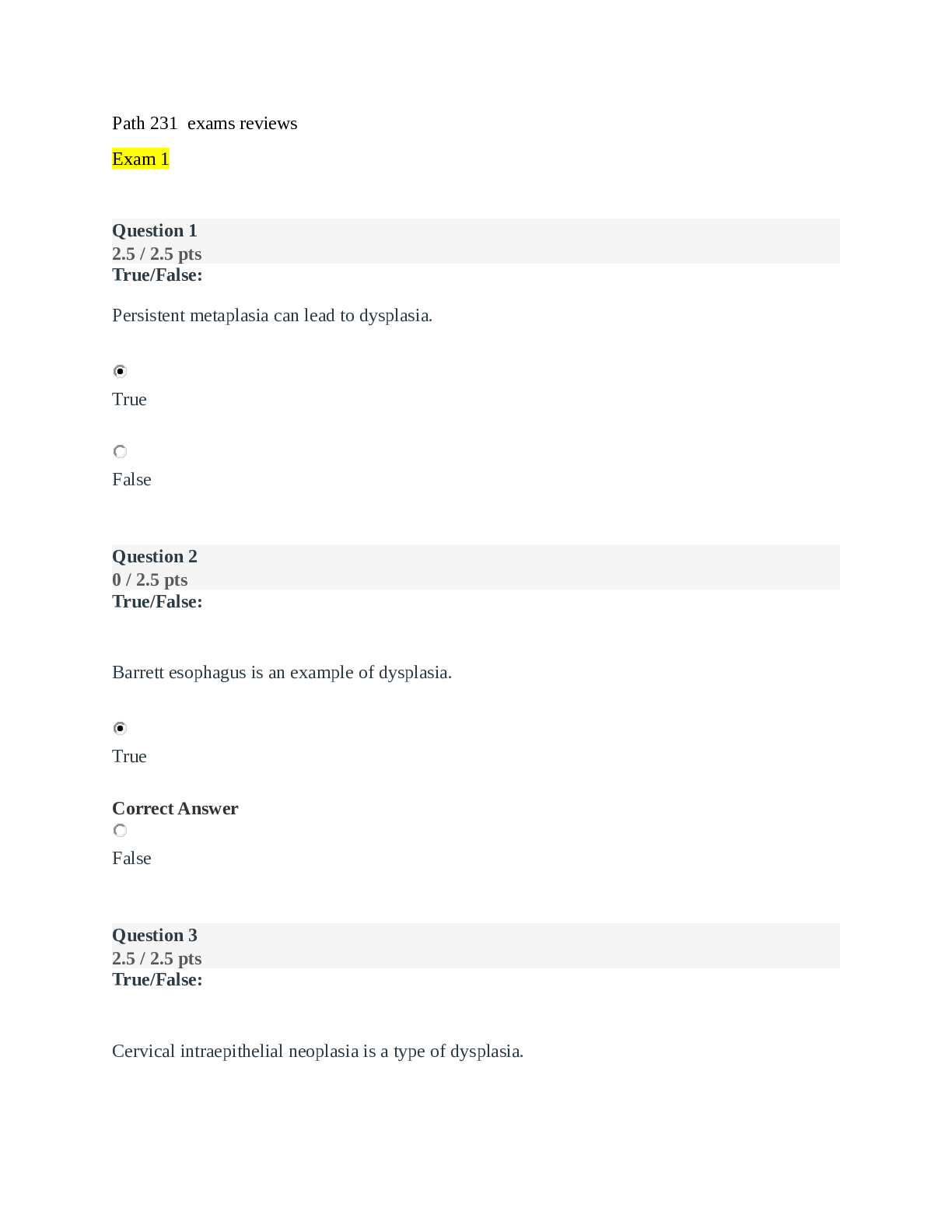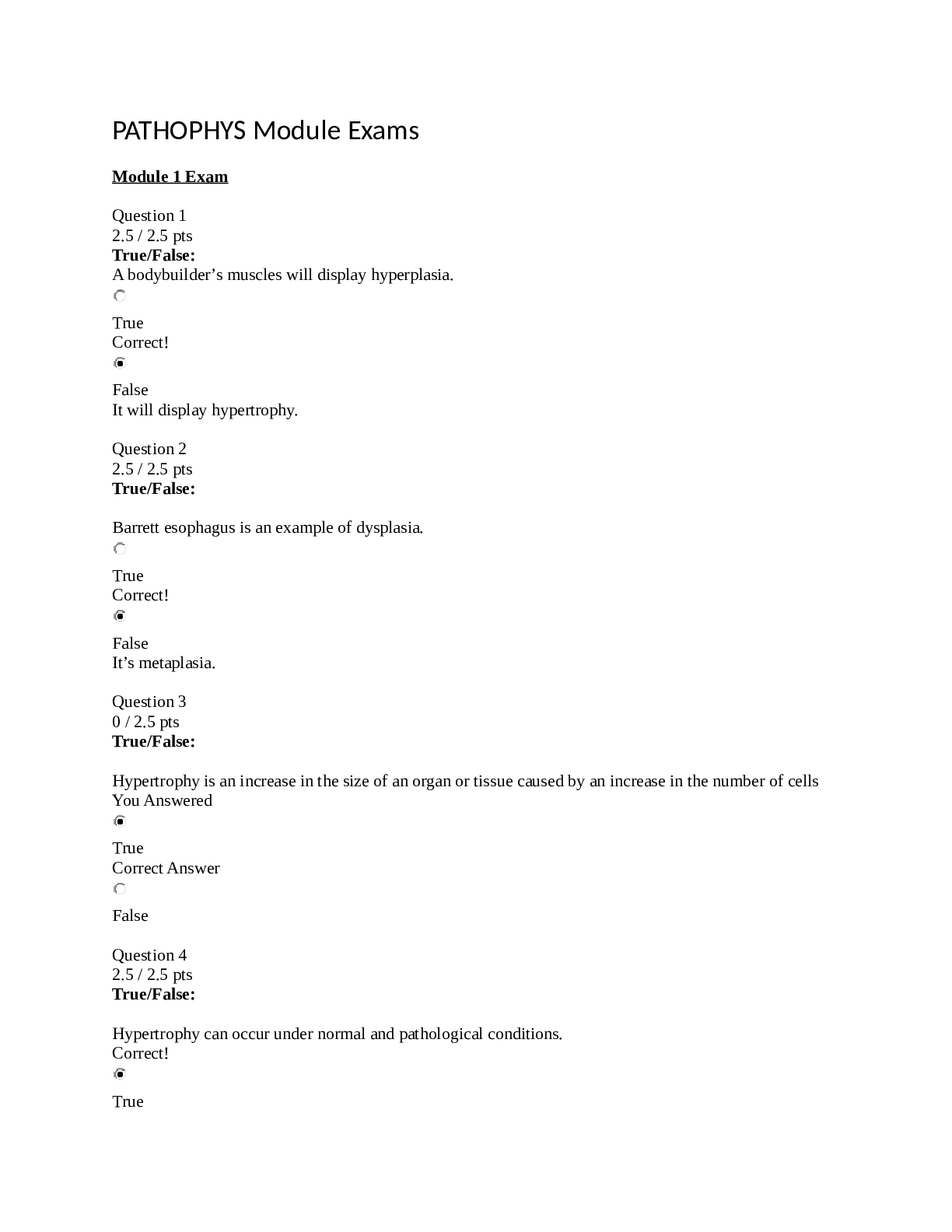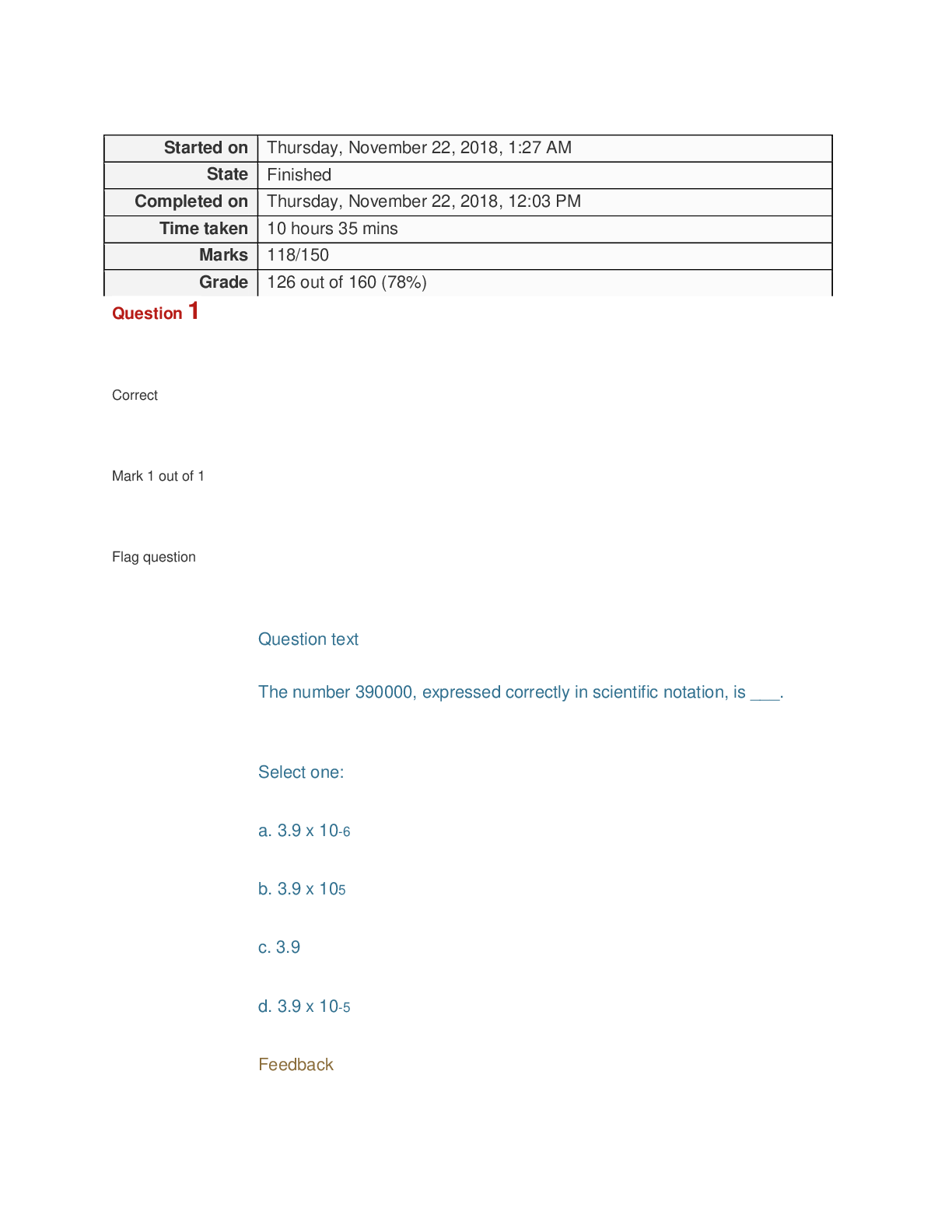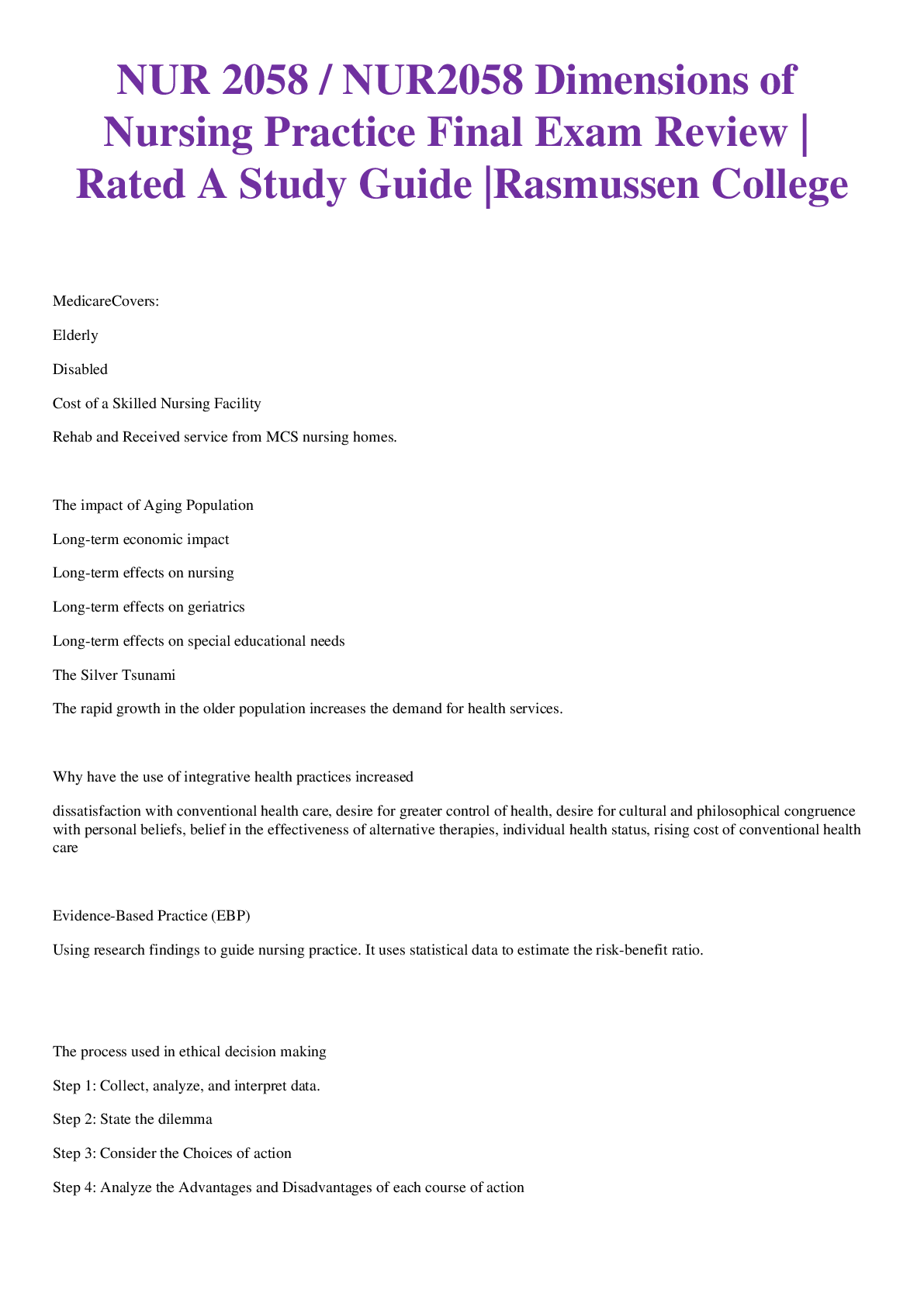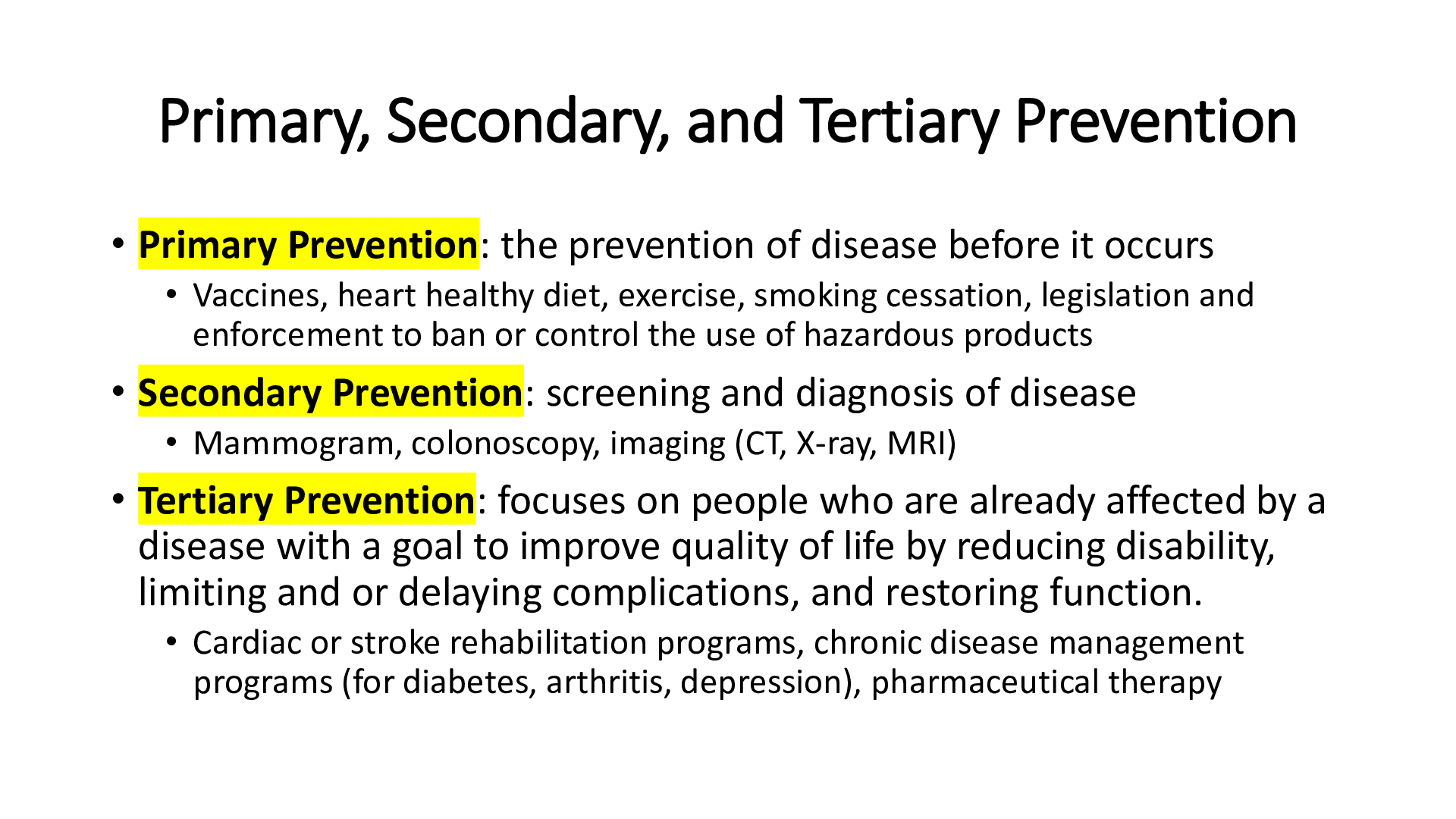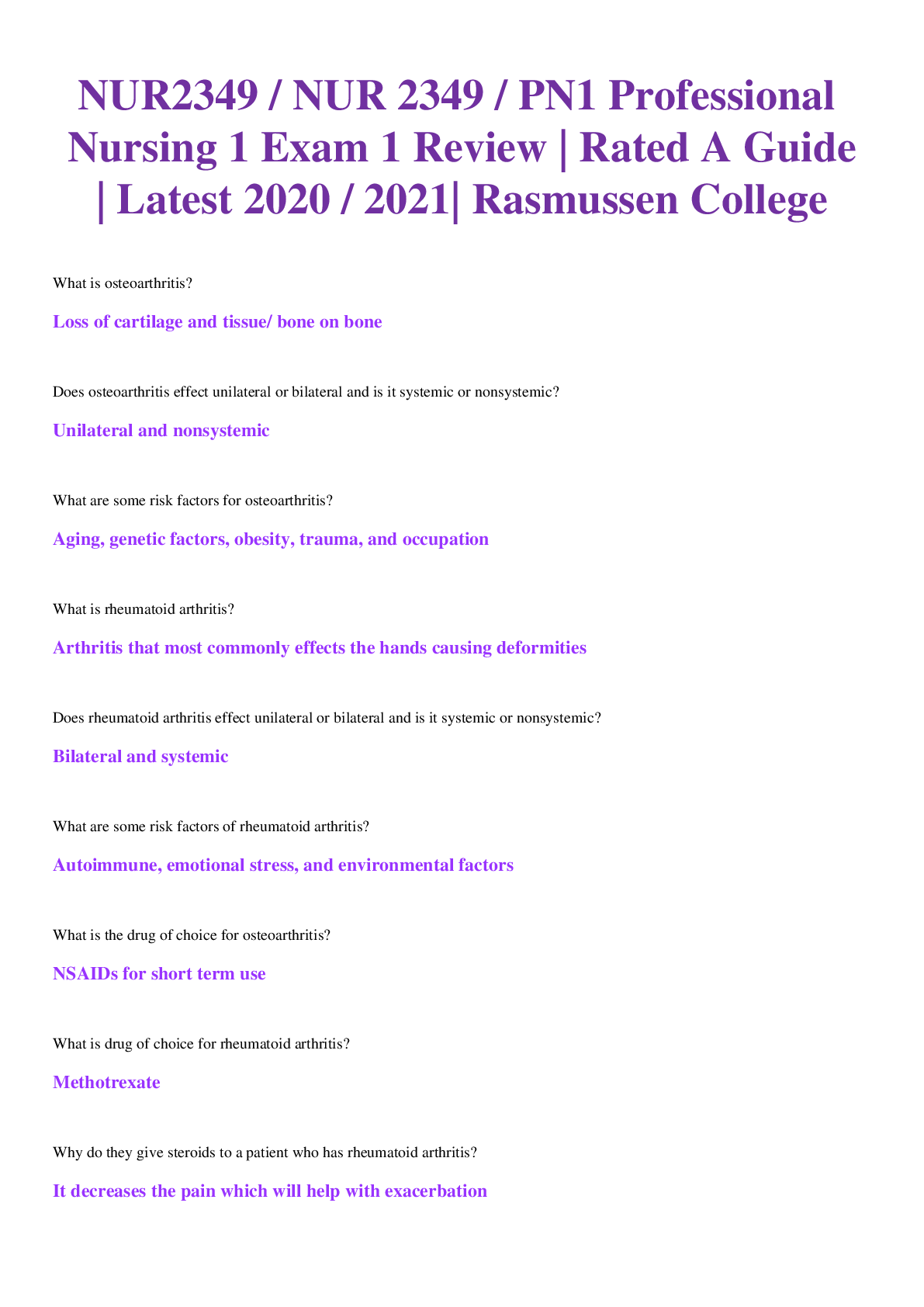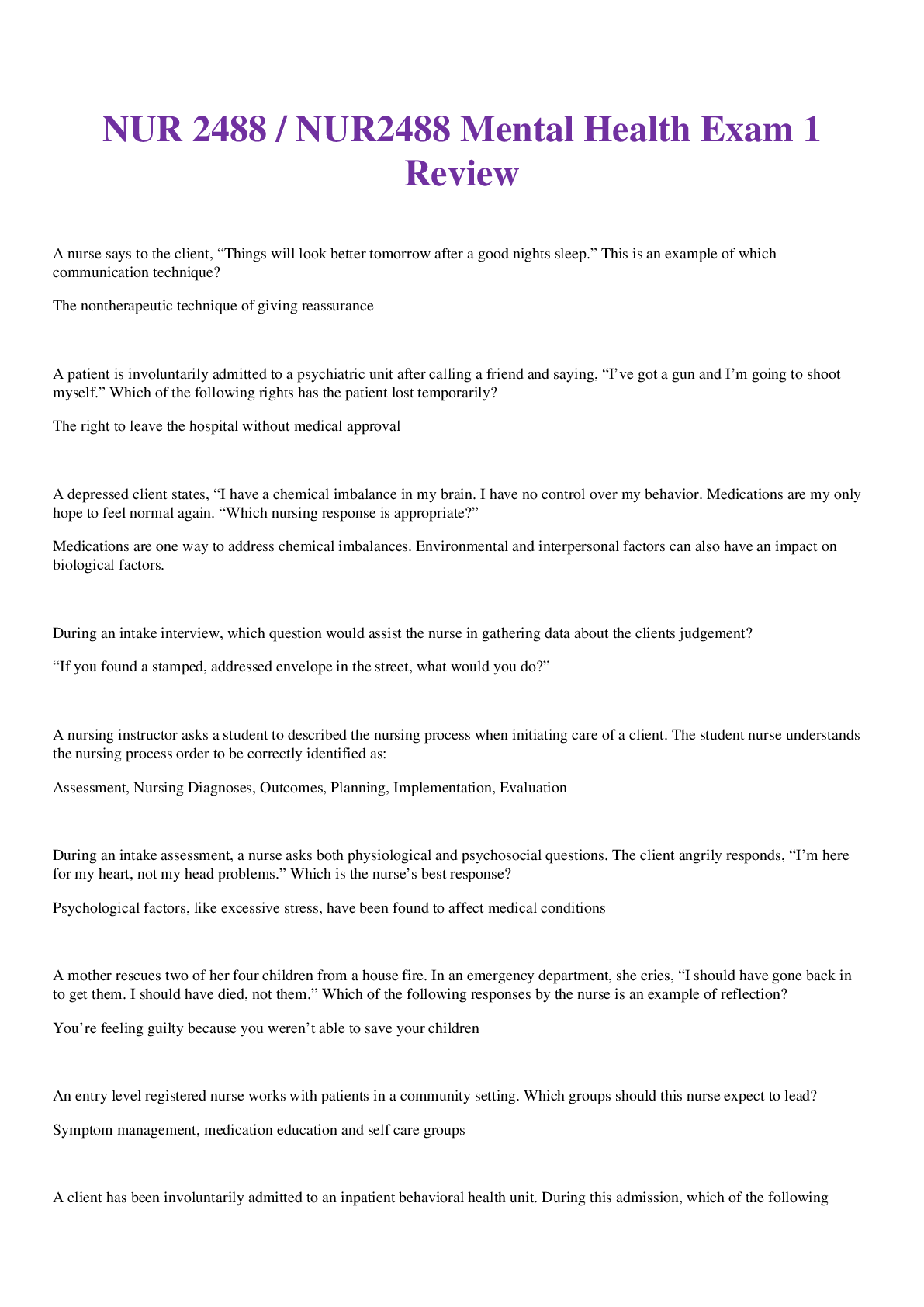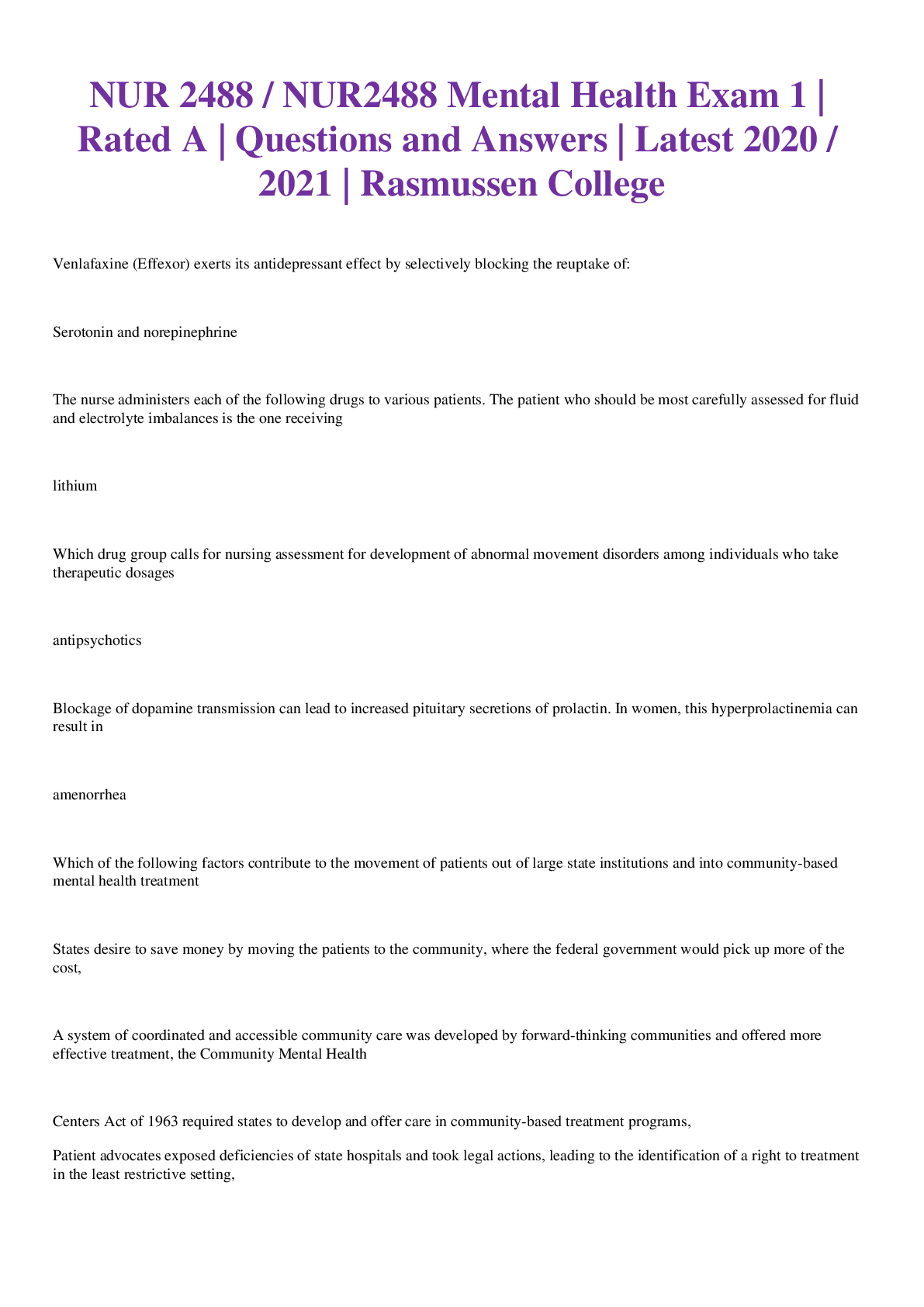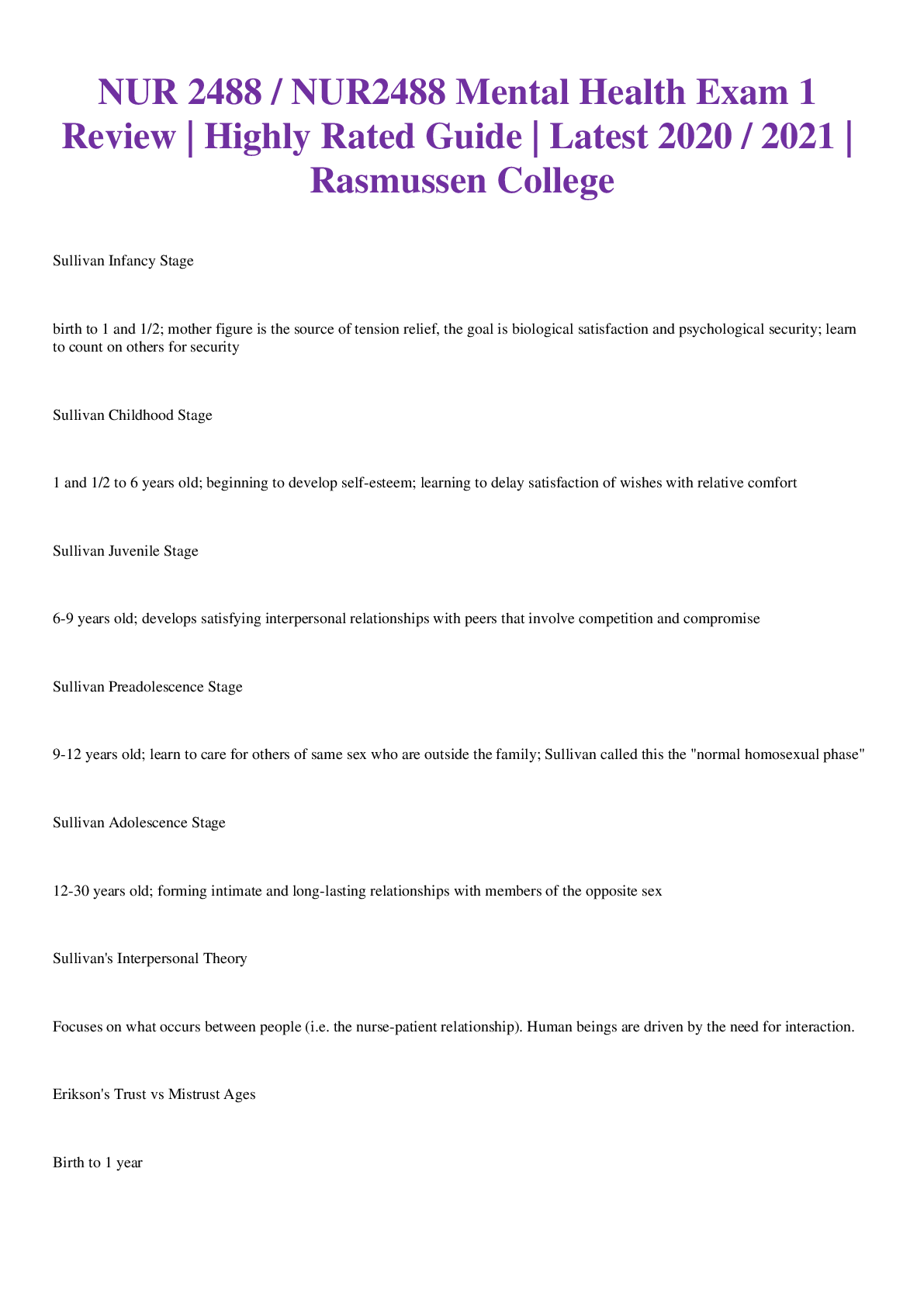Physics > EXAM REVIEW > University of WisconsinKINES 361Kines 361 Exam 2 (All)
University of WisconsinKINES 361Kines 361 Exam 2
Document Content and Description Below
Kines 361 Exam 2 on 3/15/17 End of Attention Lecture Attention and Patterns of Interference Parallel Processing o Multiple inputs go into the black box, then one outcome Serial Processing... o Visual processing, then auditory processing Parallel Processing and the Stroop Effect Stroop Effect o Irrelevant dimension of the display interferes with reaction time o Stimulus identification occurs in parallel without attention (word and color of word) o Source of interference is response competition in the selection stage Do you want to read the word or say the color of the word? Psychological Refractory Period Double-stimulation paradigm o S1 is presented, you push a button o S2 is presented shortly after, you push another button o The PRP is the difference of your S1 and S2 reaction times o The shorter the SOA, or the stimulus onset asynchrony, the longer the RT2 Interference and Response Production Single Channel Hypothesis o An attempt to account for the PRP o If S1 enters the single channel, then processing of S2 cannot occur until the channel is cleared o Similar to the bottleneck theory Implications of Refractoriness for Pracical Situations Best example: a fake o The fake is S1, and S2 (moving around the opposing player) happens too quickly because they are reacting to the fakeWhat is the role of Attention During Movement Production? Continuous Technique o Doing a continuous task and doing a simple task to see how much attention the continuous task takes Example: Walking on a treadmill and counting down by 3s to see how much attention walking takes Probe Technique o A very quick probe to see how much an individual movement takes A heel strike for example The Probe Technique More attention to probe or less attention to the primary task means that the movement is more automatic More attention to the primary task or less attention to the probe means that the movement is more automatic o Basically, if you can pay a lot of attention to the probe, the task is simpler Posner and Keele A lot of attention is required when you initiate and complete a movement Less attention during the movement Larger attention is required for a small target End of Attention Review Questions 1. Describe the Stroop effect. What does this tell us about attention? The Stroop effect deals with parallel processing. When you get 2 stimuli simultaneously, one of the stimuli will likely interfere with the other (response competition) 2. What is the psychological refractory period? Describe this phenomenon with respect to “faking” in basketball. PRP is the time difference between 2 stimuli with SOA. A fake is S1, the move to the basket is S2. S1 causes the defensive player to react, and if S2 is quick enough, they will be reacting to S1 while the offensive player moves towards the basket 3. Describe the probe technique. Give an example (from class or one you make up) of an experiment that uses the probe technique to determine how much attention is required in a task.A probe will tell us how much attention is required for a task. Walking on a treadmill and asking a random question. If they can really sit there and think about the question while walking, it will be obvious that the task they are doing is simple and requires little attention. Sensory Information (Vision) Control of Movement Exteroceptors o State of the environment Proprioceptors o State of own body The Eye as an Effector The eye is both a sensor and an effector o Sensor: light comes in o Effector: movement of eyes Extraocular Muscles o Rotate the eyeball o Horizontal rotation Lateral and medial rectus o Vertical rotation Superior and inferior rectus o Torsion Superior and inferior oblique Saccade o Quick movements o 300 degrees a second Smooth Pursuit o Slowly following an object Vergence o Inward towards nose (convergence) o Away from me (divergence) The Eye as a Sensor Conversion of light into an electrical signal Cornea Pupil Retina o Rods: peripheral vision and night vision o Cones: central vision and color Once at the retina, electrical signals are sent via the optic nerve laterally or contralaterally to hemispheres in the brain, eventually to the primary visual cortex Two Visual Systems Pathway 1: What is it? o Focal o Cognitive o Ventral stream o Perception o Used to identify objects (memory) o Strongly linked to consciousness o Retina PVC Inferotemporal Cortex Pathway 2: Where is it? o Ambient o Motor o Dorsal stream o Action o Used without conscious awareness o Retina PVC Posterior parietal cortex Evidence for Two Visual Fields Optic Ataxia o Can recognize an object, but cant physically point to it o Focal system functions, while ambient system can’t figure out the location Visual Agnosia o Can’t identify an object visually, but can describe the object o Damage to the focal system, fine ambient system Keele and Posner Wanted to discover the loop time for vision Task: Discrete aiming o Move a stylus to a target 15 cm away o MT times: 150, 250, 350, and 450 ms o Randomly, lights would go out Hypothesis o If movements are made more quickly than the minimum time required to use visual feedback, errors should be the same for vision and no vision conditions Aka, lights should not make a difference Results o Somewhere between 150-250 ms, you need to use visual feedback o As MT increased, probability of missing the target decreased for both lights on and lights off, however when the lights were off, the negative slope was not as great Progress on Keele and Posner’s Hypothesis o No definite answer o It is likely very task dependent, however the best estimate is approximately 100-160 ms Visual Kinesthesis Moving Room Experiment o Done on toddlers and adults o Visual feedback is telling the person that they are moving, but they are actually stationary Adults will sway as the room moves, toddlers will fall over o Visual development isn’t completed until at least 8-10 years of age Room moves forward, you’ll fall/sway backwards Whole Body Actions: Vision and Balance Exproprioception o Knowledge from where you are in space o Can sometimes override proprioception and give rise to overt responses o Visual dominance/cue conflict Example of cue conflict o Walking on the treadmill then walking off of it. You feel like you’re moving faster than you actually are Determining Time to Contact (Tau) Tau = 1/rate of expansion Rate of expansion = how much distance something covers in relation to time and its position relative to the reflective image on the retina Evidence of Tau Size of the object and the expansion rate is important in determining when an event is triggered The critical value of tau = event is triggered (hand beginning to close) Kitten Experiment Method o One kitten can move, one cannot Results o Active kitten could extend legs when approaching a surface and could also avoid approaching surfaces o The passive kitten could extend legs correctly to avoid things ***Development of visuomotor coordination is critical to being able to correlate movements with visual changes*** Visual Search A process of directing visual attention to locate relevant environmental cues Fixation is focusing a lot of visual attention on one object Important visual cues while driving o Other cars o Signs o Lights o Sun o People walking in a crosswalk Investigating Visual Search Temporal Occlusion o Blocking the vision of the outcome of a ball flight o Helps you get better at predicting a pattern Event Occlusion o Amount of time a person requires to visually detect the environmental context information they require to perform a skill Eye Movement Recording o Recording where the eyes look to measure central vision How We Select Visual Cues Feature Integration Theory o Grouping stimuli according to unique features, or mapping it out o Usually automatic o Maps become the basis for further searching to identify specific cues o More distinctiveness = quicker identification Movement Filter o Visual attention is usually directed to moving objects Training Efficient Visual Search Experience with the activity and the environmental context is the most important aspect Outside of this, you need to: o Know what to look for and attend to o Make sure the key environmental cues are presento Sport-specific training [Show More]
Last updated: 1 year ago
Preview 1 out of 21 pages
.png)
Reviews( 0 )
Document information
Connected school, study & course
About the document
Uploaded On
Jul 28, 2021
Number of pages
21
Written in
Additional information
This document has been written for:
Uploaded
Jul 28, 2021
Downloads
0
Views
63

